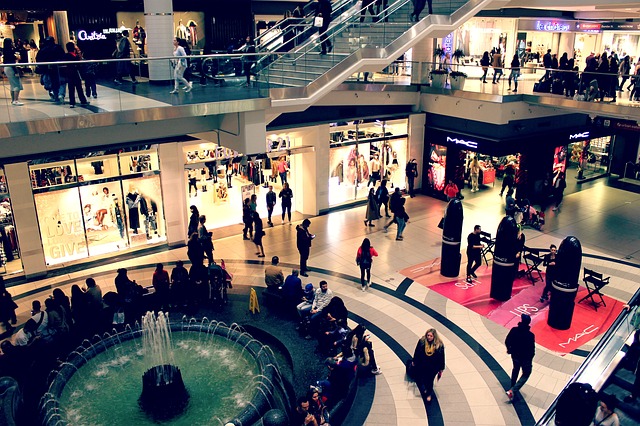In the first part of this series, we discussed the broader consumer and macroeconomic trends that brands will disrupt the 2022 holiday shopping season. Identifying the challenges and opportunities is just the beginning. To attract shoppers in such a competitive and intimidating environment, brands will need to take an extremely focused and measured approach. How do you get started?
General tips
Brands can stay top-of-mind with paid and organic search, paid and organic social media, video, and display advertising. However, you don’t want to blindly broadcast your message on all these channels and hope customers come flocking. When consumers are besieged with brand messaging as they commonly are today, it’s difficult to stand out. Brands need to make meaningful connections with customers to help them feel seen, understood, and appreciated, which will go a long way in influencing who they want to buy from. To sustain consumer attention, brands can plan large-scale campaigns that repeat messaging through frequent ad targeting and eye-catching creative assets.
While virtually every consumer shops online for holiday gifts, many will also return to in-store experiences. Brands must account for this and ensure they build both online AND offline strategies in conjunction with one another. This is especially important in today’s environment, where shoppers may research online and purchase in-store, or vice-versa. A seamless experience that is consistent wherever the consumer could be will go a long way in building a truly meaningful and memorable connection that can make or break a potential sale.
And don’t forget about your loyal customers – they can be your best ambassadors. Reward and retain them this holiday season with outstanding customer service. This can include conveniences like free shipping, easy returns, virtual try-ons, and live-stream shopping. We got a preview of this with Amazon’s July Prime Day where shopping live streams had more than 100 million views in addition to thousands of digital creators also live streaming shopping experiences throughout the two day shopper extravaganza.
Convenience is king in retail. Brands should also plan for “buy online/pick up in store (BOPIS)” and curbside pickup services as consumers need to easily find and get their holiday purchases. What used to be a value-add for companies during the pandemic became a must-have for companies in business today. Perks that provide seamless, efficient and easy ways for consumers to tailor the brand experience to their needs are now table stakes. Approximately a quarter of American online shoppers picked up their most recent eCommerce purchase in-store or at the curb.
To take full advantage of the opportunity ahead of them, we recommend marketers keep the following four things in mind for a joyous holiday shopping season.
#1 – Know your numbers
While consumer sentiment is weak due to the current economic climate, spending remains strong, leaving tremendous opportunity to win the hearts and minds of customers. First, make sure your house is in order. Brands should conduct an in-depth review of their product data feed to ensure there are no errors that may hinder ad delivery across channels. This could technically be done at any time during the year, though a comprehensive review in the third quarter will best prepare advertisers specifically for the holiday season.
As we know, it’s not enough to just advertise everywhere and hope people see and act on it. If your goal is to capture more consumer attention and foster connections – which it obviously should be – the most important measurements to track are Impression Share (IS) and Share of Voice (SOV). If you can maintain a high impression share related to high-value keywords, then it demonstrates you are capturing more audience attention. Other metrics like CPM and CPC indicate how well your brand is performing in terms of capturing attention. Following these metrics will go a long way in streamlining your advertising strategy and budget.
Brands should also measure the effectiveness of ad creative and channel mix by looking at click-through rates (CTR), conversion rates, and customer acquisition costs (CAC). Analyze the way consumers interact with your creative assets, for example, the number of likes, shares, and comments a specific ad receives on social platforms like Facebook and Instagram. High-quality engagement is the result of awesome holiday creative tailored to specific audiences. Advertisers can use those insights to their advantage by informing the broader strategy and increasing awareness and consideration across other channels.
As we’ve mentioned, consumers are still spending despite economic challenges, they simply may purchase fewer items this holiday season. This presents an opportunity to increase AOV. AOV provides a clearer picture of how much [in dollars] customers are buying with each transaction on your website, and when evaluated in combination with Return on Ad Spend (ROAS), you’ll have a better idea of when exactly to provide discounts, if any. However, proceed with caution when it comes to giving out deals. Even if consumers buy more at a discount, your AOV could decrease. Discounts can also alter customer expectations to unrealistic and unsustainable levels or decrease brand equity. But a thoughtful, well-planned deal strategy can nudge consumers to increase their total order value and grow holiday revenue.
As we evaluate your advertising performance and eCommerce experience, we also want to determine overall profitability. ROI will evaluate the success of all advertising efforts and costs year-round; whereas ROAS will measure ad campaign performance. ROAS offers real-time insights that can help improve performance at the campaign and audience level. Audiences segmented based on behavior, specifically their motivations, can help define the value each segment has on your bottom line. Brands can use this intelligence to move nimbly in volatile markets like the current one.
With lots of discounts and exclusive shopping events, the holidays can be a good time to earn new customers who may be drawn to your brand by your advertising and sales promotions. However, not every customer is profitable based on their first purchase. Customer lifetime value (LTV) will determine the value of the customer throughout their relationship with the brand. To decrease attrition and grow revenue this holiday season, brands can target customers with high LTV or recent purchases, or even remarket to consumers who live in specific areas to drive in-store visits.
Brands will also want to evaluate shopping cart abandonment rates and store visits to identify where customers may fall off before completing a purchase. Abandonment rate and store traffic are good indicators of consumer intent – whether a customer is simply researching gift ideas or they’re a serious shopper closely considering a purchase. Paying close attention to these metrics can help you bridge the gap between intent and conversion.
#2 – Discover new ways to search
Shoppers without gifts in mind are likely to use the months leading up to the winter holidays to search online for ideas and inspiration. Of the 43% of U.S. holiday shoppers that used Google to get gift ideas, 64% used the platform for gift discovery and inspiration.
In addition to the major search engines, more consumers are using social media to search. Brands should have a social media presence as well as a paid social strategy to stay top of mind as consumers search. The right keywords and channel mix will provide depth and breadth to your coverage as consumers query for bargains, coupon codes, deals, and discounts when looking for gift items. For example, searches for “cheap and best,” have grown 40% globally year-over-year, and searches for “specials this week” have increased 60% globally. A combination of organic and paid search optimization will help maximize brand visibility, so you should develop a blended search strategy to convert consumers into shoppers.
Organic marketing entertains and educates consumers about the brand while building customer loyalty. Paid advertising tactics target consumers based on their very specific needs and interests at the ideal time for purchase. Upper-funnel awareness tactics are new to your brand, you can start with organic, or awareness, campaigns, but be careful about taking customers from channels that may be closing sales now. It’s best to lean on past holiday performance to get a clearer picture of advertising and marketing costs for the upcoming winter holiday season. Smart strategies can help manage out-of-stock inventory to maximize organic demand and drive incremental demand.
Below are a few specific tactics that brands should deploy to ensure they reach consumers at the right time with the perfect message.
- Audience: Review audience strategies to ensure that brands have the best audience data uploaded and ready for the holidays. Brands should segment new customers (by excluding current customers) – and then target current/previous customers. With this strategy, you can determine media plans and messaging by audience segment. Also, if brands don’t or can’t enable this advanced segmentation, Google Ads allows advertisers to set a new customer acquisition goal to value and bid towards new and returning customers differently.
- Awareness: Create upper- and middle-funnel awareness campaigns via YouTube, Display Network (GDN), Microsoft Audience Network (MSAN), and Discovery. Brands should then have measurement practices in place to understand how these channels drive direct sales and influence down-funnel sales. You can do this via Google Analytics, and there are also conversion lift studies that can be utilized in Google Ads.
- Segmentation: Potentially segment SEM campaigns by product profit margin. It’s possible to segment campaigns by profitability, and brands can bid more aggressively toward their top sellers and their highest margin products.
- Performance max seasonal adjustment: Performance Max is a new campaign type within Google that is gaining traction this year and brands can get ahead by mastering this new feature NOW. One way is to utilize Seasonal adjustments. This feature allows advertisers to adjust their bid strategy based on anticipated changes in conversion rates for events such as holiday sales. Because Smart Bidding already exists for predicted seasonal events, advertisers should only use the adjustments for changes that are otherwise atypical. The adjustments should be used for long weekend promos or sales that typically last between 1-7 days.
- Creative: Add promo-specific creatives, and be sure to run with your best performing creative during the holiday season.
#3 – Creative campaigns that invite participation
With such fierce competition these days, holiday creative needs to be emotionally engaging and visually arresting to really stand out and compel consumers to make a purchase. A few ways to make your creative pop:
- Video is currently the most engaging advertising format, and we only expect this type of content to increase in popularity. Make sure you have a hook that instantly draws in customer attention.
- Messaging focused on pain points and solutions. This results in creative that is relatable to the customer and solves a problem or fulfills a need for them.
- Create personalized and interactive assets that are native to each platform.
- Work with influencers on user-generated content (UGC) with a performance-first creative approach.
- Leverage artificial intelligence to inform messaging, designs, and visuals for more targeted, customized consumer outreach and connection.
- Live video streaming transports consumers to be everywhere they want while continuing to educate and entertain. Consumers who can’t be there to shop in person get the complete shopping experience through live video of a hosted shopping in the store. Brands can answer consumers’ questions, show off product features, and may add giveaways or contests to drive up the fun factor and increase engagement.
One way to tell if the creative is moving the needle is by looking at your measurement reporting. Performance-driven creative maximizes measurement insights using tools like artificial intelligence and automation to optimize creative based on consumer interests and behaviors. These insights will help determine which ads will best perform on each platform and help meet your holiday sales goals.
#4 – Build and nurture relationships
Brands can boost AOV, generate buzz, and demonstrate “social proof” by implementing strategies to engage some of their most loyal customers. Influencer and creator marketing has significantly increased in recent months as brands look for ways to stay top of mind with consumers.
Brands should look to extend their current partnerships with influencers and creators to be long-term collaborations. Evolve campaigns into partnerships where you have a consistent presence with the influencer and their following. This way, consumers will have an established relationship with the brand when they’re ready to start shopping for the holidays.
User-generated content is a great way for influencers to provide a third-party endorsement of a product or service. This will strengthen consumer trust in your brand and attract a large, diverse audience to showcase your brand in front of. Because of the effectiveness of this tactic, we expect brand and influencer partnerships to increase this holiday season.
Holidays celebrate tradition and honor rituals, though this year will – once again – be unlike any other. To help new and returning customers find and purchase exactly what they’re looking for during this time of year, brands must leverage data and insights to create omnichannel, emotionally-stirring advertising campaigns.
Reach out to schedule a call with our eCommerce and retail experts to learn how we can help you build and implement effective digital strategies that will grow audiences and convert more customers.





